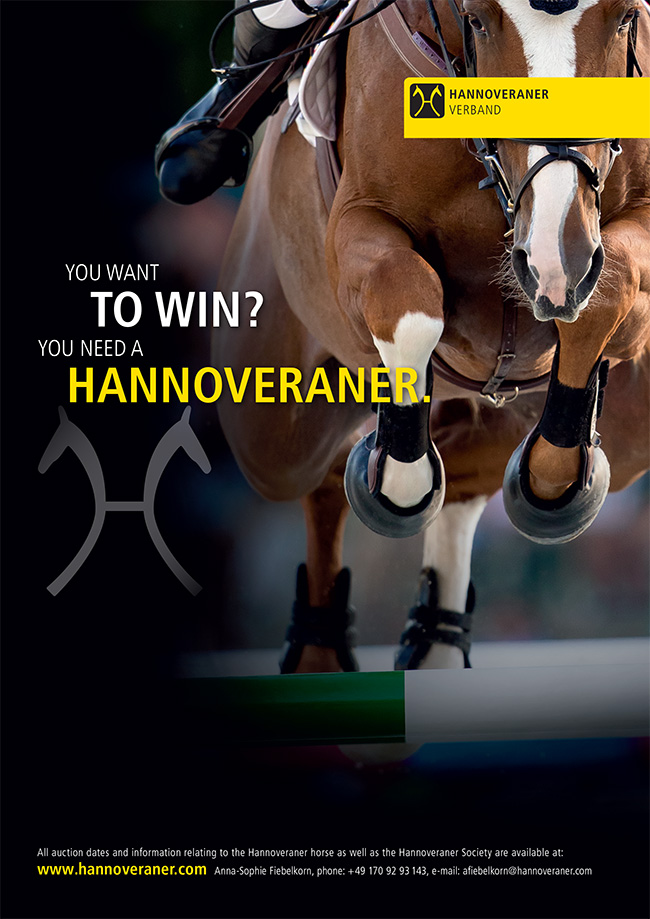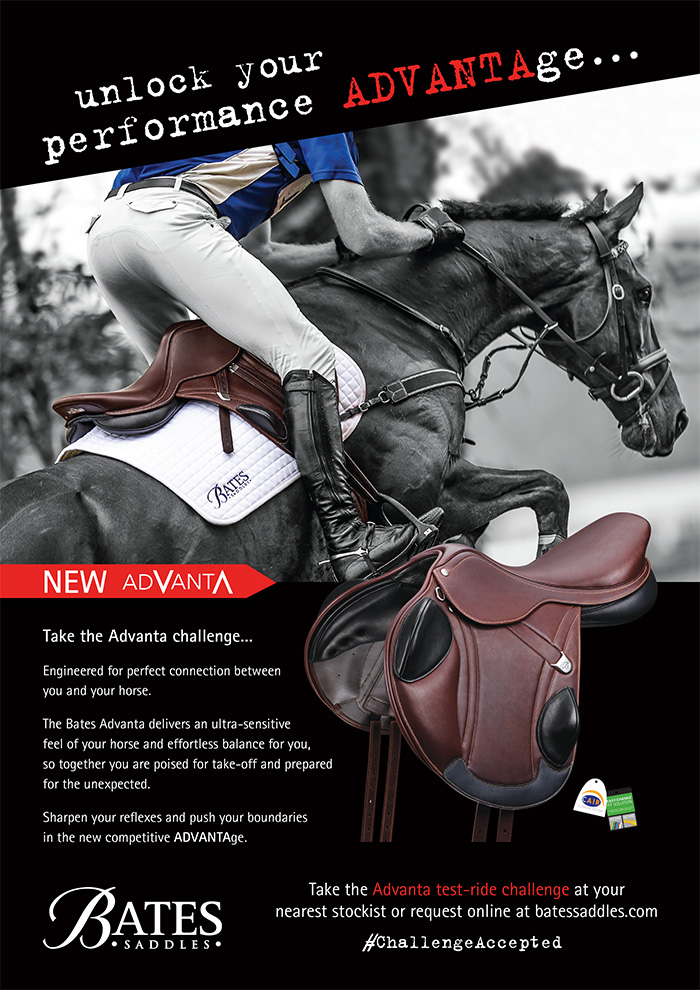This working session with Christopher Burton appeared in print in 2010.
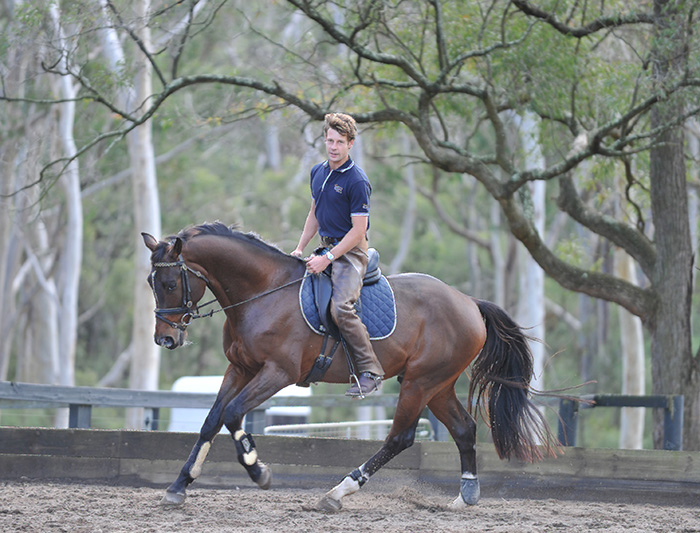
Story – Chris Hector & Photos – Roz Neave
It is always a pleasure to just sit and watch a talented rider at work, it really isn’t hard to see what they are trying to do, because good work is always sensible and logical. It was like that watching eventing star, Christopher Burton working with one of his new rides, the Hanoverian bred, Kinnordy Rivaldo (by Riverdance out of a half Thoroughbred mare by Winterkönig). The horse is a real mover, with a particularly impressive canter, and Christopher was just letting him breeze around the arena at Redleaf Park…
And of course, it was fun to sit down over a cup of coffee after the working session and chat with Christopher:
Kinnordy Rivaldo is an interesting horse, a horse with a lot of Warmblood and yet quite a refined, typey sort of horse… he doesn’t look like a typical Warmblood?
“I didn’t buy him because of his breeding. He felt beautiful, he felt light across the ground in his canter, in his gallop, and I think that is so important.
He comes up so beautifully through the wither…
“He hardly hits the ground, it is quite amazing. The other thing about him is that he doesn’t seem to fatigue like some of the other young Warmbloods – that can be a little frustrating on the flat at times, but I suspect that that attitude will end up being my friend because it is going to carry me through at the end of a long three day event. There’s horses and there’s horses, we use these terms ‘Thoroughbred’ and ‘Warmblood’, yet that Warmblood I am riding there, might be more sensitive than any Thoroughbred I have ever ridden and have just as much ‘go’ and stamina as any of them. I don’t actually buy them off their breeding as much as what I like about the horse, and, as you know, eventers are hard to find.”
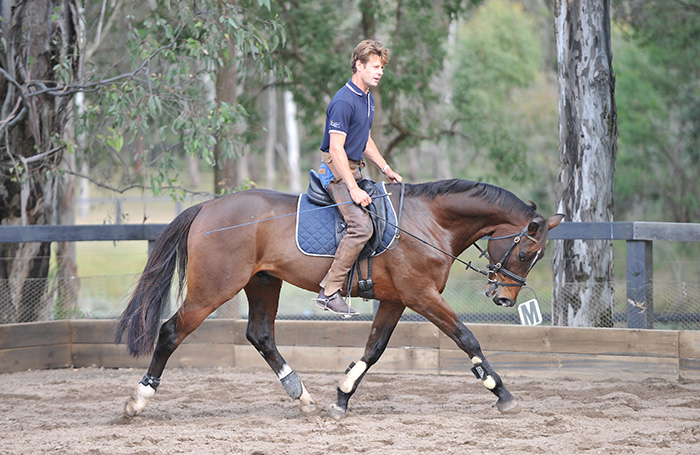
more follows
With Rivaldo, it looked as if you were just playing with the movements?
“I was working on keeping him happy, we’ve been quite tough on him because he’s been quite tricky. I have to be careful not to be on him too long, and if I do try some of the advanced movements, like extended or medium trot, then I would just hop off his back and go rising and let him reach his neck down and stretch his back a little bit – because he is still a young Warmblood. The one thing that I am learning about riding the Warmbloods – and this information has come from a lot of very supportive people around me – they are not like the Thoroughbreds, they take so much longer to develop. Often though they are surprising, the horses that aren’t great at the start end up being very good horses…”
You really like lots of halts in your work?
“I’m very lucky that my sponsors, Capricorn, has put in a mirror for us, and that has been such a useful training aid, I can’t believe it. I train the halt a lot, but the halt in so many different ways. You would even see me doing it out cross country schooling – jump a cross country fence, canter away on a straight line and halt the horse. Repetition, repetition, until you can halt the horse with the feeling of an upwards transition – on a soft hand I can really halt the horse. It is a great way to close a horse up. I do that a lot cross country schooling and a lot in my flat work schooling. If everything is going well, then you will find that the half halt improves quickly, and even on cross country, they will come back to you and relax before the complexes where you have to slow down, and this is how they can become a faster horse cross country, they are listening to you more easily.”
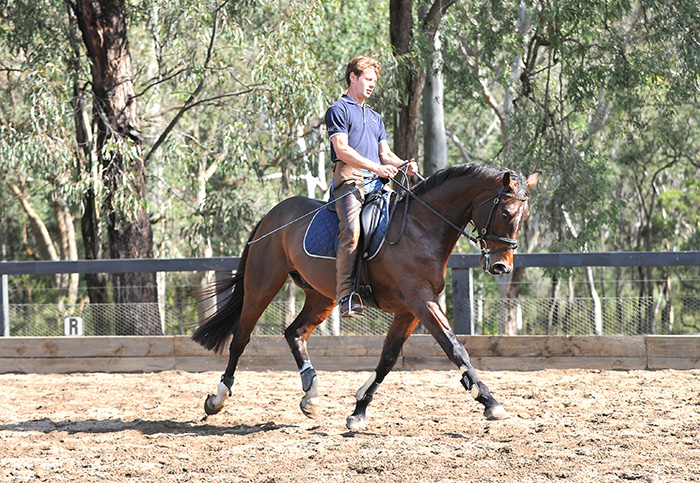
That’s something you’ve worked on a lot – being faster cross country without making the horse go faster…
“I’ve had some tricky mouthed horses in the past, even Newsprint who was a good horse cross country was not easy in the mouth and I used to school him a lot with the halts and half halts, and in the end he was a lovely ride cross country. It was like he knew what I was thinking, if I wanted him to come back coming to a complex, he’d slow down and watch and wait for the fences to come.”
more follows
There was the NSWIS study that showed that you came in with a better time than Emma Scott, despite the fact that her horse traveled faster because you took the shorter tracks…
“I am always very conscious of the shorter, most direct line to take the shortest time possible. I’ve jumped fences at Melbourne and seen other horses’ footprints going 50 metres away before they get on the line to the next fence, that’s crazy. If you can be balanced and turn the horse and head directly to the next fence and follow the shortest path possible, you’ve got to have an advantage. That was interesting that survey, it really help clarify a lot of things.”
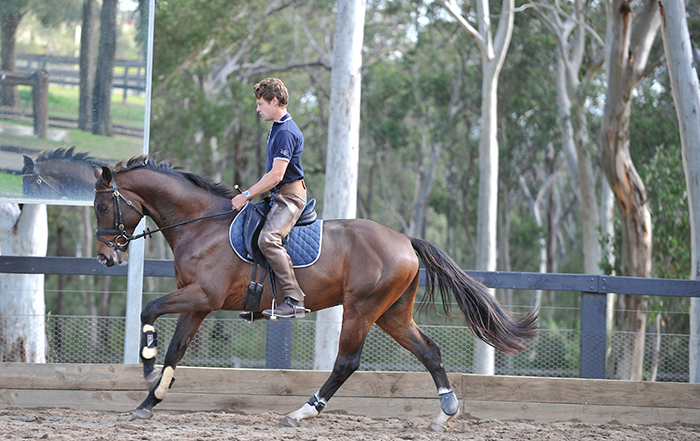
The other trick is to maintain a steady pace, not having to pull and chase all the time…
“There are two sides to that. One is being conscious of not wearing the horse out by slowing down and speeding up. The other is, it is about being able to see a good distance out of the pace you have. I always admired Mark Todd, and we used to watch videos of him going around Badminton or Burghley, and you’d look at the video and think, ‘he’s going so slow’, and then he would come in on time, or a couple of seconds under because he was so good with his eye and his timing, he could just pick the fences off and not waste time slowing up, and not ever have to shoot off after a fence to try and catch up. If anything that’s probably my one regret with the modern sport, with these World Cups it’s going a bit too much like a rat race. But still – and I say this to the boys who work for me – you will go faster by going smoother, you won’t be faster by going out of the start box, galloping, screaming, kicking, that way you will have a problem trying to run the time down.”
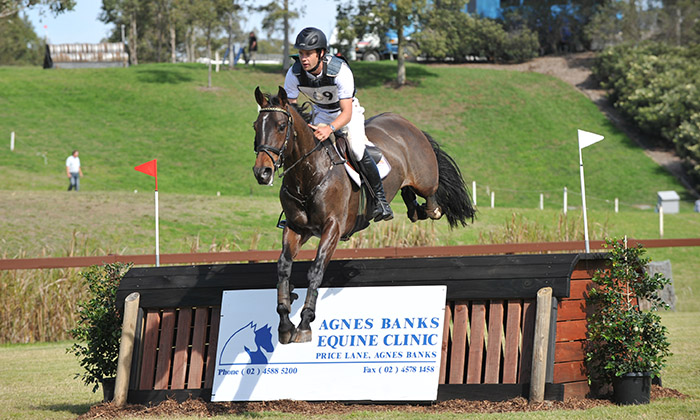
Breeding eventers and looking for a good cross? There’s a lots to choose from at IHB in Australia. Check out the 2018 range of European stallions: www.ihb.com.au
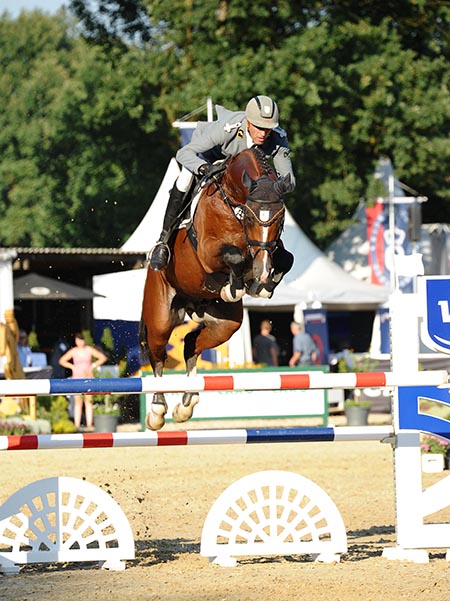
Qualito
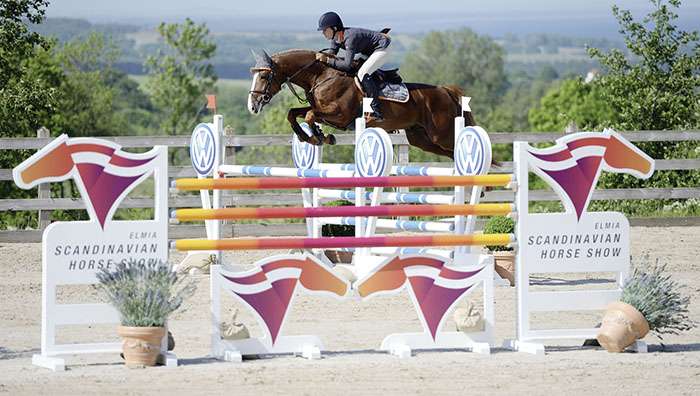
For Laubry


